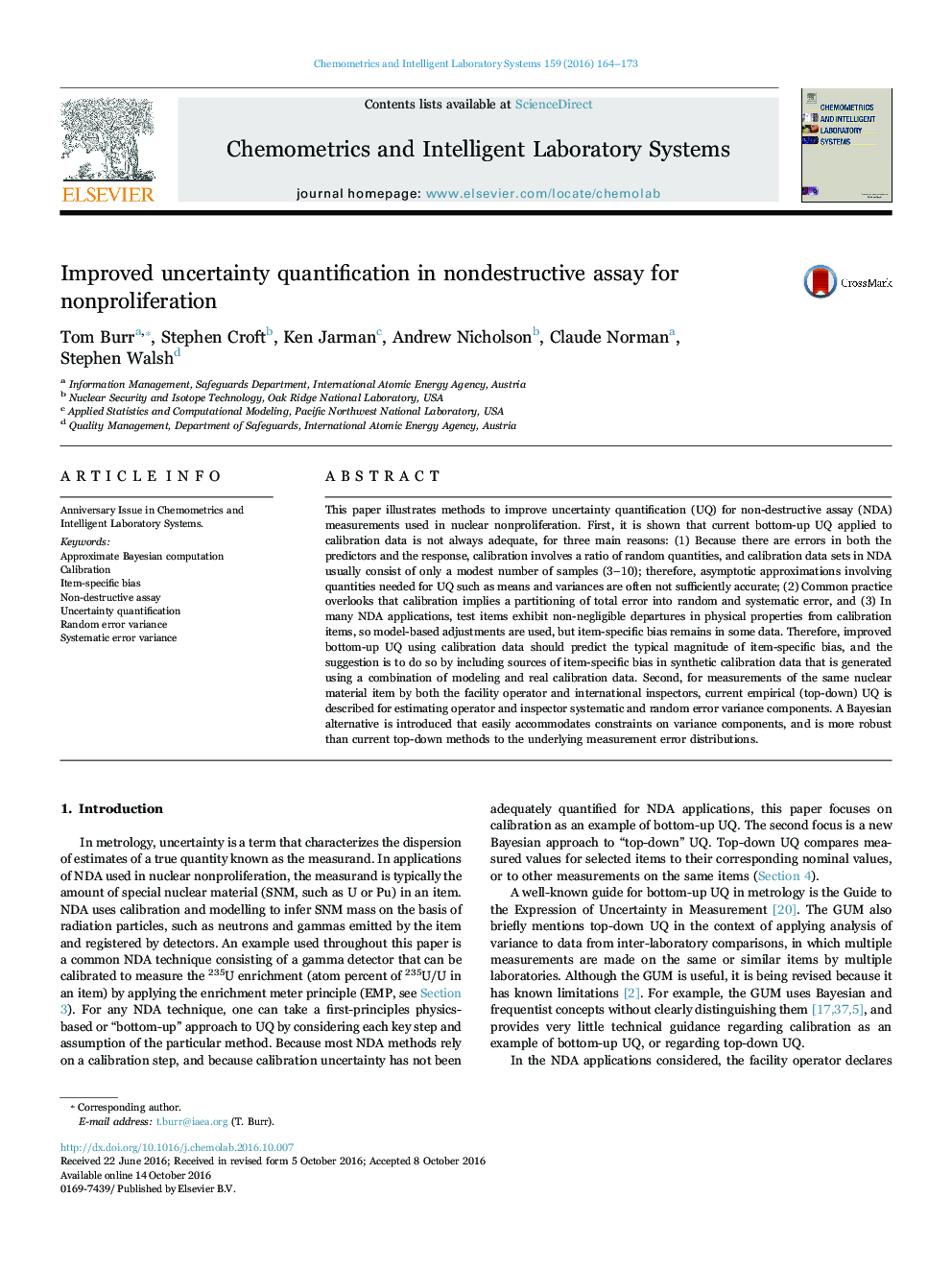| Article ID | Journal | Published Year | Pages | File Type |
|---|---|---|---|---|
| 5132362 | Chemometrics and Intelligent Laboratory Systems | 2016 | 10 Pages |
This paper illustrates methods to improve uncertainty quantification (UQ) for non-destructive assay (NDA) measurements used in nuclear nonproliferation. First, it is shown that current bottom-up UQ applied to calibration data is not always adequate, for three main reasons: (1) Because there are errors in both the predictors and the response, calibration involves a ratio of random quantities, and calibration data sets in NDA usually consist of only a modest number of samples (3-10); therefore, asymptotic approximations involving quantities needed for UQ such as means and variances are often not sufficiently accurate; (2) Common practice overlooks that calibration implies a partitioning of total error into random and systematic error, and (3) In many NDA applications, test items exhibit non-negligible departures in physical properties from calibration items, so model-based adjustments are used, but item-specific bias remains in some data. Therefore, improved bottom-up UQ using calibration data should predict the typical magnitude of item-specific bias, and the suggestion is to do so by including sources of item-specific bias in synthetic calibration data that is generated using a combination of modeling and real calibration data. Second, for measurements of the same nuclear material item by both the facility operator and international inspectors, current empirical (top-down) UQ is described for estimating operator and inspector systematic and random error variance components. A Bayesian alternative is introduced that easily accommodates constraints on variance components, and is more robust than current top-down methods to the underlying measurement error distributions.
